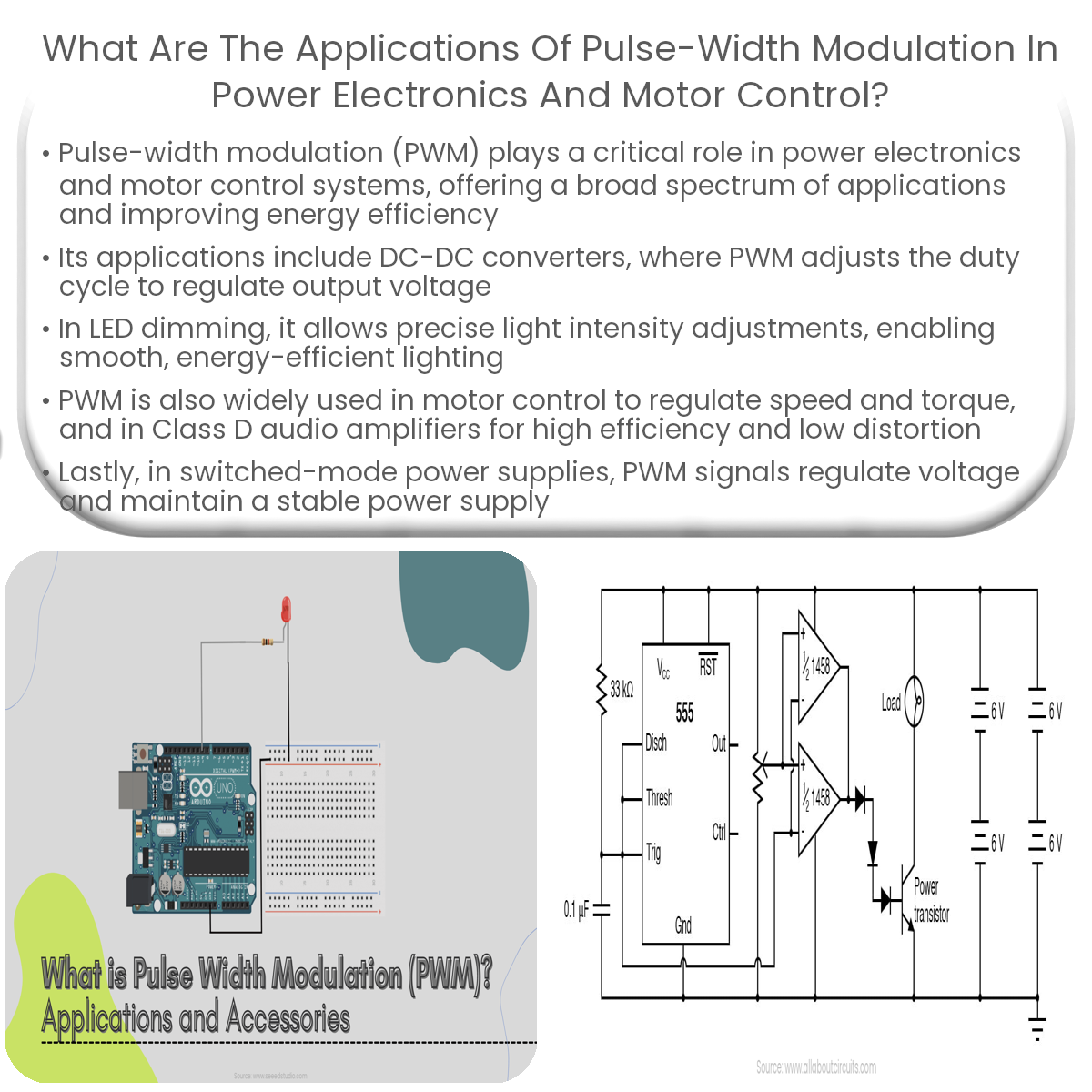PWM is used in DC-DC converters, LED dimming, motor control, Class D audio amplifiers, and switched-mode power supplies for efficient power management.
Applications of Pulse-Width Modulation in Power Electronics and Motor Control
Pulse-width modulation (PWM) is a technique widely used in power electronics and motor control systems to regulate power delivery, manage energy consumption, and control the speed and torque of electric motors. In this article, we will discuss various applications of PWM in power electronics and motor control systems.
DC-DC Converters
One of the primary applications of PWM in power electronics is in DC-DC converters. These converters efficiently convert a DC voltage from one level to another. By adjusting the duty cycle of the PWM signal, the output voltage can be easily controlled, providing a regulated and stable output for various electronic devices and circuits.
LED Dimming
LED dimming is another popular application of PWM. By varying the duty cycle of the PWM signal, the intensity of the LED light can be precisely adjusted. This method allows for smooth, flicker-free dimming and improved energy efficiency, making it suitable for lighting systems, backlighting in displays, and decorative lighting applications.
Motor Control
PWM is extensively used in motor control applications to regulate the speed and torque of DC and AC motors. In DC motor control, the PWM signal is used to control the average voltage applied to the motor, which in turn, regulates the motor speed. For AC motors, PWM is used to synthesize a variable-frequency AC waveform, which controls the motor speed and torque in a more efficient manner.
Class D Audio Amplifiers
Class D audio amplifiers employ PWM techniques to achieve high efficiency and low distortion. By converting the audio signal into a PWM waveform, these amplifiers can efficiently drive speakers with minimal heat generation and power loss, making them an ideal choice for portable devices and energy-efficient audio systems.
Switched-Mode Power Supplies (SMPS)
Switched-mode power supplies use PWM signals to regulate the output voltage and maintain a stable power supply. By varying the duty cycle, the output voltage can be accurately controlled, reducing energy waste and increasing efficiency. SMPS can be found in various applications such as computer power supplies, battery chargers, and voltage regulators.
In conclusion, pulse-width modulation is a crucial technique in power electronics and motor control, offering a wide range of applications. Its versatility and efficiency make it an indispensable tool for controlling power delivery and managing energy consumption across various devices and systems.


